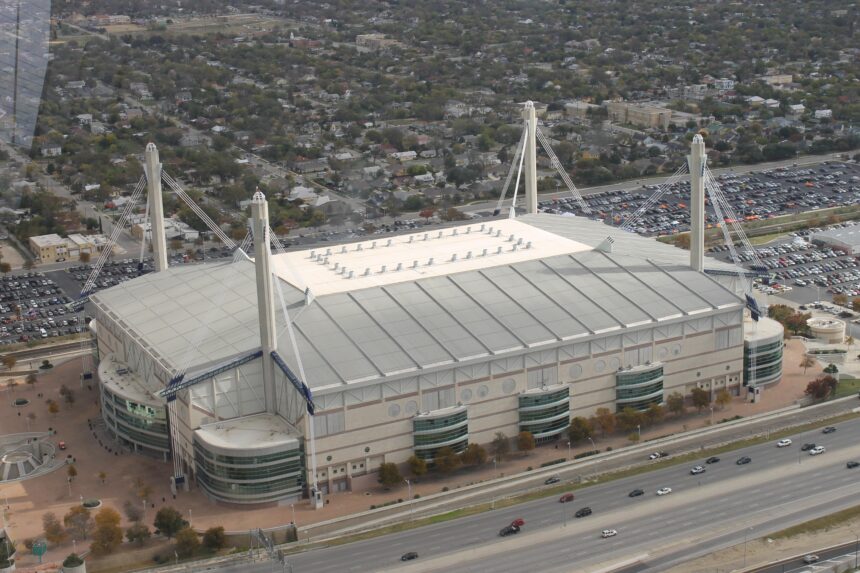San Antonio city officials are weighing a proposed $350 million to $500 million public investment to support the San Antonio Spurs’ downtown arena project, despite growing opposition from local residents and advocacy groups. The controversial funding plan has sparked debate over the use of taxpayer dollars for sports infrastructure, raising questions about economic impact, community benefits, and city priorities. As deliberations continue, city leaders face mounting pressure to balance the Spurs’ stadium ambitions with public concerns about accountability and transparency.
San Antonio Weighs Major Public Investment in Spurs Downtown Arena Development
San Antonio city officials are currently evaluating a proposal for a significant public investment ranging from $350 million to $500 million to support the redevelopment of the Spurs’ downtown arena. The project aims to revitalize the urban core by enhancing sports, entertainment, and community spaces, potentially spurring economic growth and increasing tourism activity. However, the proposal has ignited a heated debate among residents and local advocacy groups concerned about the allocation of taxpayer funds and prioritizing public resources.
Key points fueling the controversy include:
- Financial Transparency: Critics demand detailed accountability on how public contributions would be managed and the potential impact on city budgets.
- Community Benefits: Questions arise regarding whether the arena development will deliver long-term advantages to neighborhood residents beyond commercial gains.
- Alternative Investments: Opponents suggest channeling funds toward essential services like affordable housing, public transportation, and infrastructure improvements instead.
| Investment Aspect | Estimated Value | Projected Outcome |
|---|---|---|
| Arena Renovation | $200M – $300M | Modernized facilities for games and events |
| Community Spaces | $50M – $100M | New parks, plazas, and gathering areas |
| Public Infrastructure | $100M – $150M | Improved transit routes and safety features |
Community Concerns Emerge Over Financial Impact and Transparency of Proposed Funding
Residents and local advocacy groups have raised significant doubts regarding the city’s plan to allocate between $350 million and $500 million toward the development of the Spurs’ new downtown arena. Many community members question the necessity of such a large financial commitment, especially in light of ongoing economic challenges faced by San Antonio, including underfunded public services and infrastructure needs. Transparency concerns have also mounted as city officials have yet to fully disclose the detailed breakdown of how the funds will be sourced and allocated, prompting calls for a more comprehensive public accounting.
Critics warn that without clearer financial oversight, the investment could exacerbate budget deficits or divert resources from essential programs. Among the most frequently cited worries are:
- Potential tax increases for residents and local businesses
- Long-term debt implications for the city
- Lack of clarity surrounding private versus public funding shares
- The absence of binding agreements ensuring community benefits
To illustrate the financial stakes, the following table compares estimated costs with previous arena investments in similar-sized cities:
| City | Arena Cost | Public Contribution | Private Investment |
|---|---|---|---|
| San Antonio (Proposed) | $700M | $350-$500M | $200-$350M |
| Austin | $600M | $150M | $450M |
| Oklahoma City | $450M | $250M | $200M |
Experts Suggest Increased Public Engagement and Alternative Financing to Address Opposition
Community leaders and financial experts emphasize the need for San Antonio officials to incorporate higher levels of public engagement in the decision-making process. They advocate for town hall meetings, interactive surveys, and transparent forums where residents can voice their concerns and receive detailed answers about the proposed $350-$500 million contribution. This approach, they argue, not only fosters trust but also helps tailor the project to better reflect community priorities, potentially easing tensions surrounding the arena’s funding.
In addition to enhanced civic dialogue, alternative funding mechanisms are being proposed to reduce the city’s direct financial exposure. Suggestions include public-private partnerships, targeted tax increment financing districts, and leveraging corporate sponsorships tied to the Spurs’ brand. Below is a simplified overview of key financing strategies recommended by experts:
| Financing Strategy | Description | Potential Benefit |
|---|---|---|
| Public-Private Partnership | Collaboration between city and private investors | Shared financial risk and expertise |
| Tax Increment Financing (TIF) | Using future property tax revenue increases | Limits immediate budget impact |
| Corporate Sponsorship | Brand-related naming and advertising rights | Additional revenue to offset costs |
- Increased transparency could diminish skepticism among taxpayers.
- Multi-channel public feedback allows for a more representative consensus.
- Diversifying funding reduces the burden on city budgets and taxpayers alike.
Wrapping Up
As San Antonio continues to deliberate its potential $350-$500 million contribution to the Spurs’ downtown arena, the city faces a complex balancing act between economic development ambitions and growing public opposition. Stakeholders on both sides remain engaged, signaling that the future of the project will depend on ongoing dialogue, community input, and careful consideration of the long-term impact on San Antonio’s residents and taxpayers. Further updates are expected as city officials navigate this contentious proposal.














